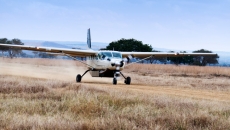More than one endangered southern resident killer whale is believed to be pregnant and a University of British Columbia scientist says he is delighted at the news.
Andrew Trites said while he doesn't know the exact number of pregnant southern residents, one of them is J35, the whale that drew international attention two years ago as she pushed the body of her dead newborn through the water for more than two weeks.
The pregnancy shows J35 is not malnourished and is healthy enough to carry a fetus, he said.
"So, that's a good sign and it's also good sign that she is pregnant because they need more babies in this population, and particularly females."
It's believed there are 73 southern resident killer whales in the group that is divided in to three pods, J, K and L. Their territory ranges from the waters off southern B.C. to California.
The residents' favoured food is chinook salmon. Many populations of that species are in decline or in danger of being wiped out in both Canada and the United States.
That and other challenges faced by orcas make a lot of B.C. residents feel closer to them, Trites said.
"And (J35's) got the most incredible backstory now of all the killer whales. It's like we're talking about a member of our family or friend of ours."
Research has shown that about two-thirds of all southern resident pregnancies are lost because of various factors including lack of salmon.
Details on how far along J35 is in her pregnancy are sparse but aerial photos show her with a "baby bump," said Trites.
Orca pregnancies last up to 18 months but for it to show, the whale has to be quite far along, he said.
"I suspect that she probably is in the last trimester, which in our case is six months long."
Southern residents have been producing about two males, for every female so the hope is that the calf will survive and that it will be a girl, he said. Scientists don't count the calf as part of the population until it is a year old.
Trites' estimate means the calf could arrive in January and calves born in the winter may face a much tougher time than those that arrive in summer, he said.
Mothers sometimes have to dive deeper to look for food, which leaves the calf up on the surface by itself, he added.
Although the mother and baby use acoustics to locate each other, there have been instances of calves getting lost, he said.
"If you go out in a boat in a winter storm and realize how rough it is, ... now imagine you're just animals swimming out there, and a very young, naive one is not very good at swimming to begin with," Trites said.
"It's got to be really, really challenging."





